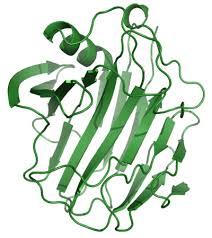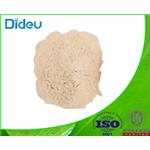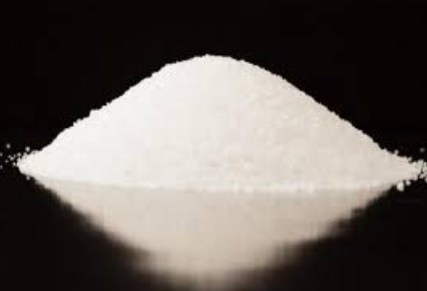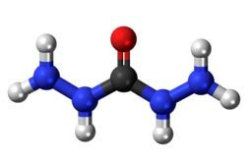Health benefits of Cellulase
Sep 16,2019
Cellulase is a class of enzymes produced by the fungi bacteria and protozoans that generate cellulolysis. This process is actually the hydrolysis of cellulose. The enzymes are also produced by certain termites. The common code for the cellulases is EC 3.2.1.4. There are various types of cellulases. Five of them are the most important.
1)Endocellulase breaks down internal bonds, thus it interrupts the cellulose’s crystalline structure, causing the exposure of cellulose polysaccharide chains.
2)Exocellulase continues the process of endocellulase by splitting the ends of the particular chains into maximum 4 units. That’s how disaccharides or tetrasaccharides like the cellobiose appear. Exocellulases can be found in 2 forms: CBHII acts at the non-reducing cellulose end and the CBHI acts at the reducing end.
3)Beta-glucosidase or cellobiase usually hydrolyses the already mentioned exocellulase and produces monosaccharides. The oxidative cellulase uses radical reactions like dehydrogenase and cellobiose to depolymerize cellulose.

Activity of cellulase
The activity of cellulase is commonly to break down cellulose and convert it into beta-glucose. The symbiotic bacteria of herbivores generate this form of cellulase. Humans and other animals, besides ruminants, cannot generate cellulase. Thus, they can break it down only partially by using fermentation and they are not able to utilize the energy from the fibrous plants.
So, whenever people eat plants, they actually ingest plant cells, fibrous cell walls and the cellulose from them. Since they are not able to produce the enzyme called cellulase, the fibers are digested by the flora from the large intestine through fermentation. However, this particular mechanism breaks down only some plant fibers. The others are eliminated from the body. Unlike humans, the cows have large amounts of microbes that digest cellulose and break down hay and grass. Thus, they take their overall energy only by ingesting grass.
Therefore, in order to digest properly the herbs, sprouts and greens, people need cellulase. This enzyme is naturally generated by bacteria, protozoa and symbiotic fungi. They can break cellulose. Cellulase enzymes differ according to their pH activity. Some of them are beneficial when working in a neutral or acidic environment, while others work best in alkaline environments.
Cellulose is an actual carbohydrate that can be found in the cellular structure of plants. It is said to be the world’s most abundant ingredient, because it is the primary component in plants and is ingested by numerous organisms. Cellulose is actually transformed in beta-glucose due to the cellulase enzyme.
Health benefits
Since the human organism is not able to digest cellulose, people can take cellulase supplements in order to obtain the beta-glucose needed within the body. Glucose, or better known as blood sugar, is an important energy source that keeps people energized. Inside the stomach and intestinal canal beta-glucose can be extremely viscous. However, when ingested properly it reduces carbohydrates and fat absorption, maintaining proper cholesterol and appropriate sugar blood levels. Cellulase supplements are obtained from Trichoderma viride, a nontoxicogenic and nonpathogenic fungus.
So, cellulase enzymes are very helpful for the human body. First of all, they keep under control sugar blood levels, by converting cellulose into beta-glucose. Also, they preserve an optimal cholesterol level and can also lower cholesterol. Another benefit of cellulase is that it eliminates toxic chemicals, free radicals and other harmful organisms from cell membranes. It even promotes the development of biofilm in cellulose. Last but not least, this particular enzyme is useful for breaking down some elements found in the microbial biofilms called polysaccharides.
Cellulase is widely utilized for processing the coffee. While the beans are being dried, the enzyme hydrolyses the cellulose. What most people don’t know is that cellulase has also industrial uses. It’s an important ingredient in laundry detergents, cleaning and washing agents. It’s also used in the paper, textile and pulp industries. This beneficial enzyme also has various pharmaceutical applications. In the bio fuels industry it ferments the biomass. It also treats the phytobezoars, cellulose bezoars that commonly stay in the stomach.
When combined with hemicellulase, xylanase, glucanase and amylase, cellulase may be used to produce various beverages like fruit juices. It’s also an important ingredient in alcoholic beverages and spirits. Moreover, when cellulase is combined with other enzymes it can be utilized to produce wine. Cellulase enzyme extracts the unpleasant aromas and tannins from the grape skin.
- Related articles
- Related Qustion
- Structure, Thermostability and Multifarious Applications of Cellulases Mar 21, 2025
Cellulases have been utilized in various commercial sectors including agriculture, brewing, laundry, pulp and paper and textile industry.
Sodium tripolyphosphate, also known as pentasodium triphosphate, pentasodium tripolyphosphate or sodium triphosphate, is used in a wide range of applications in the manufacture of cleaning products and food preservatives as well as in water....
Sep 12,2019Inorganic chemistryCarbohydrazide which is a volatile oxygen scavenger contributes no solids to the system, reacts readily with oxygen at low temperatures and pressures, and passivates the metal of the boiler system. Carbohydrazide can break down to hydrazine....
Sep 16,2019Chemical Reagentscellulase
9012-54-8You may like
- Cellulase
-

- $0.00 / 1g
- 2025-12-17
- CAS:9012-54-8
- Min. Order: 1g
- Purity: 98.0%
- Supply Ability: 1kg/month
- cellulase
-

- $1000.00 / 1kg
- 2025-12-16
- CAS:9012-54-8
- Min. Order: 1kg
- Purity: 99%
- Supply Ability: 5000
- CELLULASE
-

- $1.10 / 1g
- 2025-11-18
- CAS:9012-54-8
- Min. Order: 1g
- Purity: 99.9%
- Supply Ability: 100 Tons Min






